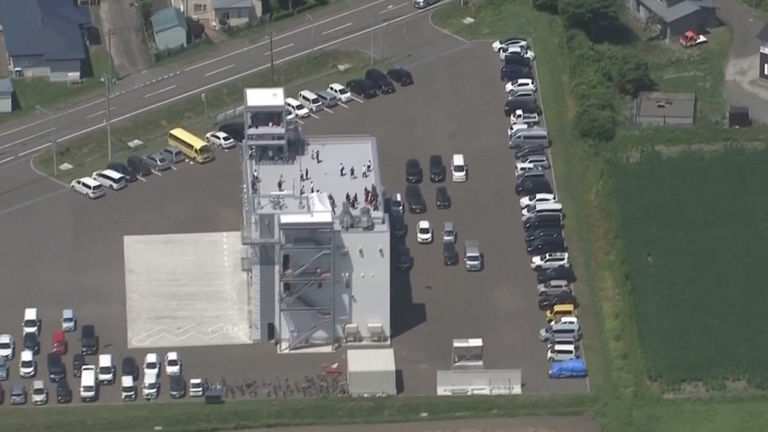A powerful 8.8-magnitude earthquake has struck off Russia’s far eastern Kamchatka Peninsula, triggering tsunami warnings for several countries.
Waves of up to 4m (13ft) were recorded in the Kamchatka Peninsula, where buildings were damaged and several people injured, officials said.
Tsunami warnings have been issued for Japan, parts of the US including Hawaii, California and Alaska, and the Philippines.
Follow live updates as widespread tsunami warnings issued
The Honolulu Department of Emergency Management in Hawaii has called for the evacuation of some coastal areas, writing on X: “Take Action! Destructive tsunami waves expected.”
The Pacific Tsunami Warning Center has said waves of 1-3m (3-10ft) above tide level were possible along some coastal areas of Hawaii, Chile, Japan and the Solomon Islands.
Waves under 30cm above tide levels have been observed in the Alaskan communities of Amchitka and Adak, said Dave Snider, tsunami warning coordinator with the National Tsunami Warning Center in Alaska.
Japan issued a tsunami warning, saying it expects waves as high as 3m to arrive along large coastal areas of the Pacific Ocean.
A tsunami of around 60cm was recorded at Hamanaka on the northern Japanese island of Hokkaido and Kuji port in Iwate on the main island, up from an earlier tsunami of 40cm, according to the Japan Meteorological Agency. A spokesperson said second or third tsunami waves had arrived, adding high waves may last for at least a day.
Nearly two million people were placed under evacuation advisories in more than 220 municipalities along Japan’s Pacific coast, the country’s Fire and Disaster Management Agency said.
The US Geological Survey said the earthquake was shallow at a depth of 19.3km (12 miles), and was centred about 125km (80 miles) east-southeast of Petropavlovsk-Kamchatsky, a city of 165,000 along the coast of Avacha Bay. It revised the magnitude up twice from 8.0 and 8.7 to 8.8 earlier.
Damage and injuries in Russia’s Kamchatka Peninsula
Kamchatka governor Vladimir Solodov had earlier said: “Today’s earthquake was serious and the strongest in decades of tremors.”
Several people in the region sought medical assistance following the quake, Oleg Melnikov, the regional health minister, told Russia’s Tass state news agency.
“Unfortunately, there are some people injured during the seismic event. Some were hurt while running outside, and one patient jumped out of a window. A woman was also injured inside the new airport terminal.”
Russia’s Tass news agency reported from the biggest city nearby, Petropavlovsk-Kamchatsky, that many people ran out into the street, while cabinets toppled inside homes, mirrors were broken, cars swayed on roads and balconies on buildings shook noticeably.
Power outages and mobile phone service failures were also reported in the capital of the Kamchatka region.
‘Significant, noticeable’ aftershocks to continue for at least a month
The first tsunami wave hit the coastal area of Severo-Kurilsk, the main settlement on Russia’s Kuril Islands in the Pacific, according to local governor Valery Limarenko.
He said residents were safe and staying on high ground until the threat of a repeat wave was gone.
A regional branch of Russia’s geophysical service has said “significant, noticeable” aftershocks with magnitudes of up to 7.5 were expected to continue for at least another month.
Meanwhile, New Zealand’s disaster management agency has warned the country’s coastal areas could expect “strong and unusual currents and unpredictable surges at the shore”.
In a national advisory alert, Civil Defence New Zealand said there was no immediate need to evacuate but citizens should stay away from beaches and shore areas.
This breaking news story is being updated and more details will be published shortly.
Please refresh the page for the latest version.
You can receive breaking news alerts on a smartphone or tablet via the Sky News app. You can also follow us on WhatsApp and subscribe to our YouTube channel to keep up with the latest news.




